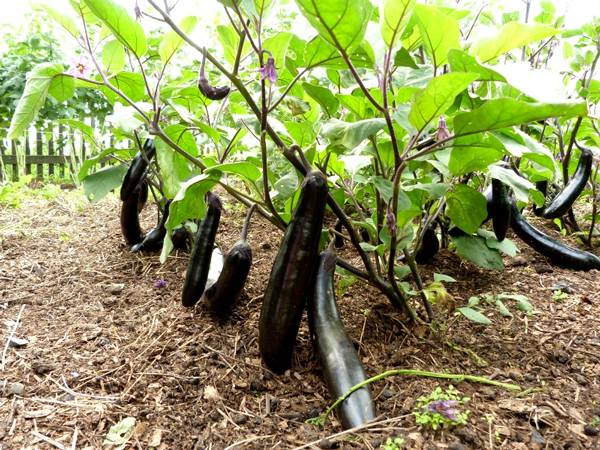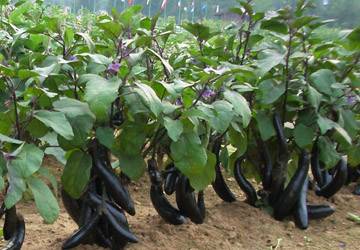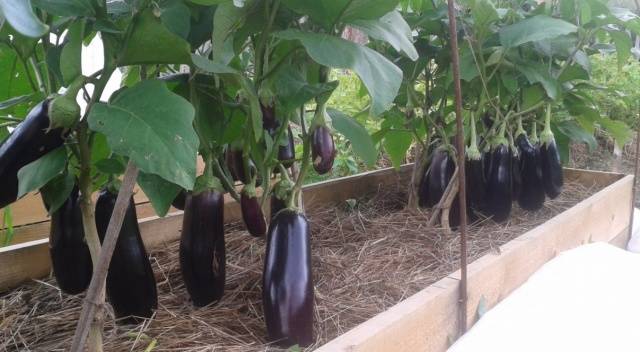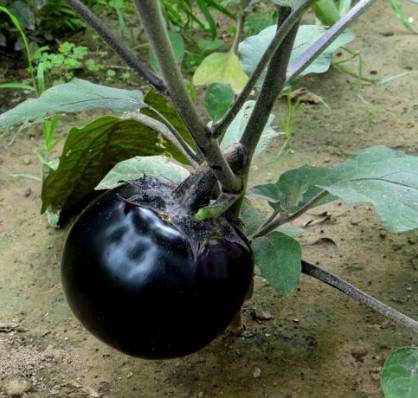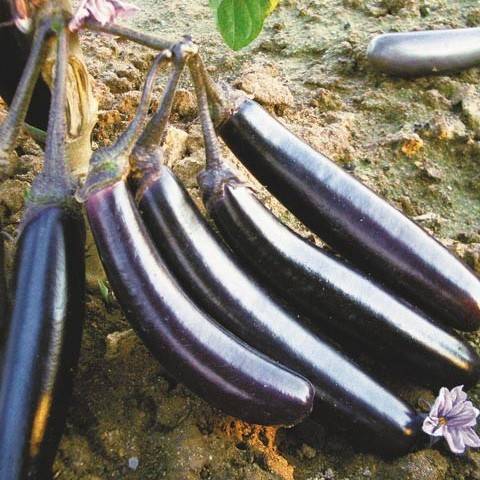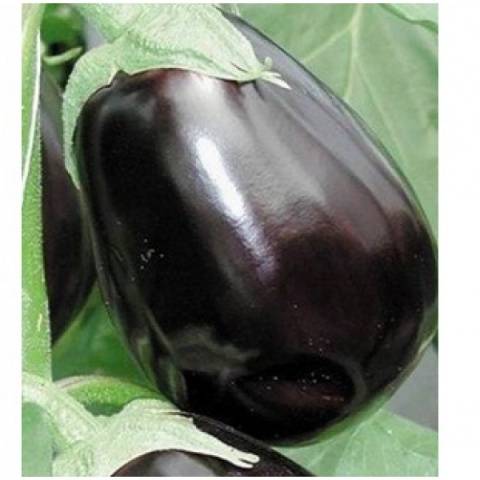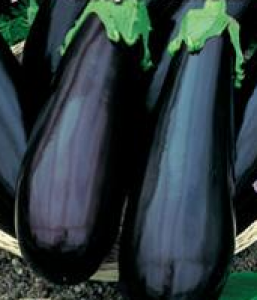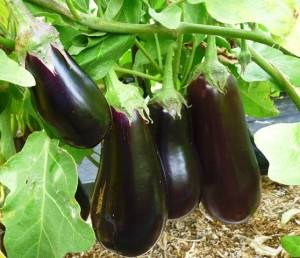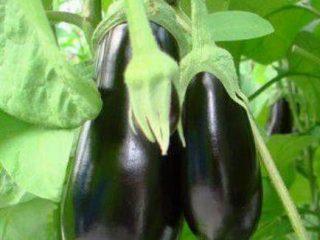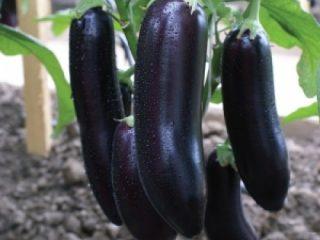Content
The template “eggplant is a southern vegetable, there’s no point in growing it in the north” has today been successfully destroyed by eggplants themselves. More precisely, those eggplant varieties, which successfully bear fruit in open Siberian soil. Moreover, the yield is quite good.
Of course, when growing eggplants in Siberia, certain nuances must be taken into account. But in general, in terms of labor costs, Siberian eggplant is no different from the southern one.
The best “Siberian” eggplants can come in a variety of sizes, shapes, colors and yields, but they are united by frost resistance and the ability to bear fruit early.
A late-ripening variety will not have time to ripen, since summer in Siberia, although hot, is short. At the same time, there is a threat of frost until June, due to which eggplants can only be planted in the ground from mid-June.
The main problem of eggplant in Siberia: draft and cold wind. Even when growing eggplant seedlings on a windowsill, gardeners try to protect them from the cold air blowing through the window slits. When planting in the ground, eggplants are often covered with film on the arches.
Under the film, due to the large difference between the external and internal temperatures, condensation accumulates, increasing the air humidity inside the shelters and promoting the development of fungal diseases. For this reason, many gardeners are beginning to use mulch as a heat-insulating material.
Vegetable growers are constantly looking for the best plant varieties for their regions. Often, to choose a variety you like, you have to experiment. You can narrow your search by selecting one or two parameters.
Varieties capable of bearing fruit in open ground in Siberia
King of the North F1
The most popular hybrid in Siberia, although it grows well in other regions. This variety greenhouses and greenhouses are contraindicated. He can't stand the heat. At the same time, light frosts do not cause any harm to it. TO In addition, in greenhouses the risk of plant damage by spider mites increases.
Eggplant is an early ripening plant with surprisingly high yield even for southern varieties. It can produce up to fifteen kilograms of fruit per square meter. Plants are planted in the corners of a rectangle with sides sixty by forty centimeters.
Eggplants ripen from the moment of full germination in ninety-five days. The fruits are usually twenty-five to thirty centimeters long. They can grow up to forty. Such a length of eggplants with a bush height of only forty centimeters creates certain problems for gardeners in the form of eggplants lying on the ground.
This variety of eggplant bears fruit all summer until frost, bearing up to ten fruits from each bush.. There are no spines on the calyx.
Eggplants of this variety do not need to be soaked before cooking; their white flesh is not bitter. A positive assessment of eggplant was given not only by gardeners in the Trans-Ural region, but also by eggplant growers in the central regions of Russia.
Diamond
An old, time-tested variety, more than thirty years ago included in the register for cultivation in the rather cold Trans-Ural regions and in the warmer Far East. It grows well in the Middle and Lower Volga and the North Caucasus.
In the northern regions, seedlings of this eggplant are recommended to be planted in greenhouses and under film. But the recommendations have not changed since the eighty-third year, when the variety was included in the register. Perhaps it is worth taking into account the modern experience of Siberian eggplant growers and planting eggplants in a sunny and sheltered place from the wind. Especially considering that while resistant to mosaic and stolbur, the variety is susceptible to fungal diseases.
Bush up to fifty-five centimeters high. It branches early and amicably, so a higher and more compact harvest is formed. In terms of ripening, it is mid-season. The ripening time of eggplants depends on the region and can range from one hundred ten to one hundred and fifty days. The absence of thorns on the calyx makes harvesting easier.
The fruits are small, elongated. Weight is one hundred to one hundred sixty grams. Length from fifteen to eighteen centimeters. The cross-sectional diameter is three to six centimeters. A ripe eggplant has a dark purple skin.When overripe (for seeds), it is brownish-brown.
The yield of the variety is average. From two to seven and a half kilograms per square meter. Disadvantages include a large number of seeds in the fruits and the contact of the lower eggplants with the ground.
The latter is much more pronounced in the King of the North and King of the Market varieties. We have learned to deal with this problem by mulching the soil under the bushes. The method is also applicable to Diamond.
Big bumpkin F1
The name is telling. The variety is distinguished by simply huge spherical eggplants. The average fruit weight is seven hundred grams. They can grow up to one and a half kilograms. The record eggplant of this variety, weighing only one hundred and eighty grams, did not reach two kilograms.
The harvest is harvested in the fifth month after sowing the seeds. Seeds for seedlings are planted in March. In the last week of May - early June, after the end of frost is guaranteed, seedlings are planted in open beds.
The bushes grow from sixty to eighty centimeters in height. The harvest begins in July. At the end of July, all ovaries are removed from the bush, except six to seven of the largest. The yield of the variety is up to seven kilograms per unit area.
Eggplant pulp contains a small amount of grains, white color, dense consistency. The variety is universal and suitable for cooking and canning. True, some housewives note as a disadvantage the impossibility of placing an entire eggplant of this variety in a container for preservation. You have to cut it into pieces, since a whole fruit of this size will only fit into a bucket or barrel.
To prevent fungal diseases, you can spray with fungicides.Spraying is carried out for the first time at the stage of the fourth – sixth leaf. Further with a break of seven to ten days. Spraying stops twenty days before the start of harvest.
King of the F1 market
Another popular variety bred for open ground in the Trans-Urals.
Seedlings sown in late February - March are planted in the ground. Like any other variety eggplant King of the market prefers sun and a place protected from the wind.
When sowing seeds for seedlings, prepare special soil: add half the volume of humus to the turf soil, mixing in a little peat for looseness. If the seeds were sown in a common container, the seedlings are planted.
Plants do not like picking and often get sick after it. Instead of picking, you can immediately plant the seeds separately in small containers.
The height of the bushes of this variety is from forty to one hundred and fifty centimeters.
Important! If the height of the bush is too high, a garter is required. If the bush is low, the lower eggplants will touch the ground. In this case, it is necessary to mulch the soil.
The variety is mid-season and begins to bear fruit in the fifth month after sowing the seeds. It has high productivity. Suitable for industrial cultivation. The fruits are well stored. They have an excellent presentation due to their uniform size and beautiful purple color. The pulp is of medium consistency, white. There is no bitterness.
The fruits are long, on average twenty centimeters, with a small diameter in cross section, making them ideal for canning or stewing assorted vegetables.
Nutcracker F1
A high-yielding, unpretentious hybrid that grows well in the open air. Medium early variety. It bears fruit a month and a half after the seedlings are planted in the ground.
Seeds are planted for seedlings at the end of February. It is transplanted into the ground at the age of seventy days. The optimal air temperature when germinating seedlings and when planting them in an open bed should be about twenty-five degrees. Seedlings are planted in rows at a distance of thirty centimeters. The row spacing is forty centimeters.
The bushes are tall and spreading. They can be up to eighty centimeters in height. On average, three to five kilograms of eggplants are harvested from a bush.
The main advantage of the Nutcracker is its regular fruit formation. The fruits are set even in the upper part. For this reason, eggplants are harvested from the Nutcracker bushes several times during the summer. This feature is similar to cucumbers, which also ripen unevenly.
The fruits are almost black with a purple tint. Glossy. Length up to fourteen centimeters. Weight from two hundred fifty to six hundred grams. The white flesh is not bitter.
Early ripening 148
A long-bred and widely known variety. Early ripening. Suitable for open ground. In the North it ripens among the first. This eggplant is unpretentious and guarantees a harvest even in Siberian conditions in open beds. True, it is not particularly productive. From a square meter you can get from two and a half to five kilograms. Harvesting can be done four months after planting the seeds.
The variety is grown through seedlings, the seeds of which are sown in late February - early March to a depth of one and a half centimeters.
The bushes are low growing. The minimum height is twenty, the maximum is fifty-five centimeters. Compact. The planting density is one and a half plants per square meter. A stimulant can be used to accelerate the growth of eggplant bushes.
The fruits are pear-shaped, five to eight centimeters long and five to six in diameter. Weight one hundred - two hundred grams. Eggplants can be harvested after they have acquired a black-purple color. When eggplants are left to seed, they become yellowish-brown in color as they ripen.
The pulp is light green, with a dense consistency, no bitterness.
Dwarf early 921
Multi-fruited early ripening variety. It bears fruit already in the fourth month after seed germination. The height of the bush is small. Does not exceed forty-five centimeters. The branching is weak, from three to five stems of purple color. Due to the small height and location of the fruits in the lower part, the stems do not break.
The variety is unpretentious and only needs to remove yellowing leaves and shoots for better illumination of flowers and leaves on the main stems. It is also necessary to loosen the soil and remove weeds. The yield of this multi-fruit variety can reach six kilograms per unit area.
The fruits are round-pear-shaped, matte, weighing up to three hundred grams. Overripe eggplants turn brownish-brown in color. Eggplants should be collected for processing at the purple color stage before browning begins. When overripe, the eggplant skin becomes rougher. The variety is used in cooking; eggplants have good taste.
Conclusion
Thus, you can choose the best of the best eggplant varieties, focusing on the descriptions of the varieties and the experience of more experienced eggplant growers.
Eggplants need to be fertilized twice with complex fertilizer: a week after planting seedlings in open ground and a month later.You can also fertilize the soil well with organic matter in advance. Before planting eggplant seedlings, add humus or compost to the soil and dig it thoroughly.
